Pictures: Lyle Such
Words: Thu Buu
Camera: Canon 5d MkIV

Two hours south of Marrakesh is the High Atlas Range where Mount Toubkal, reaching 13,671 ft. is the highest summit in North Africa. This would be our next destination. We were planning to begin the hiking portion of our trip with a two-day summit attempt followed by another three days of traverse trekking around mountains and over passes in the area.

Around the middle of December of 2018, a fatal terrorist attack killed two European hikers on the Toubkal trail just 5 miles outside of Imlil, the village where our hiking expedition was to begin. We were shaken, and like many others were uncertain of our safety and questioned the wisdom of following through with our plan to hike Toubkal. However, within days, the Moroccan government had the whole situation under control, arresting the terrorists and initiating a new procedure for hiking Toubkal. Now all hikers must be accompanied by a local mountain guide and must check in at the various checkpoints manned by government officials along the route. With the assurances that it was safe to continue hiking Toubkal, we stuck to our original plans.
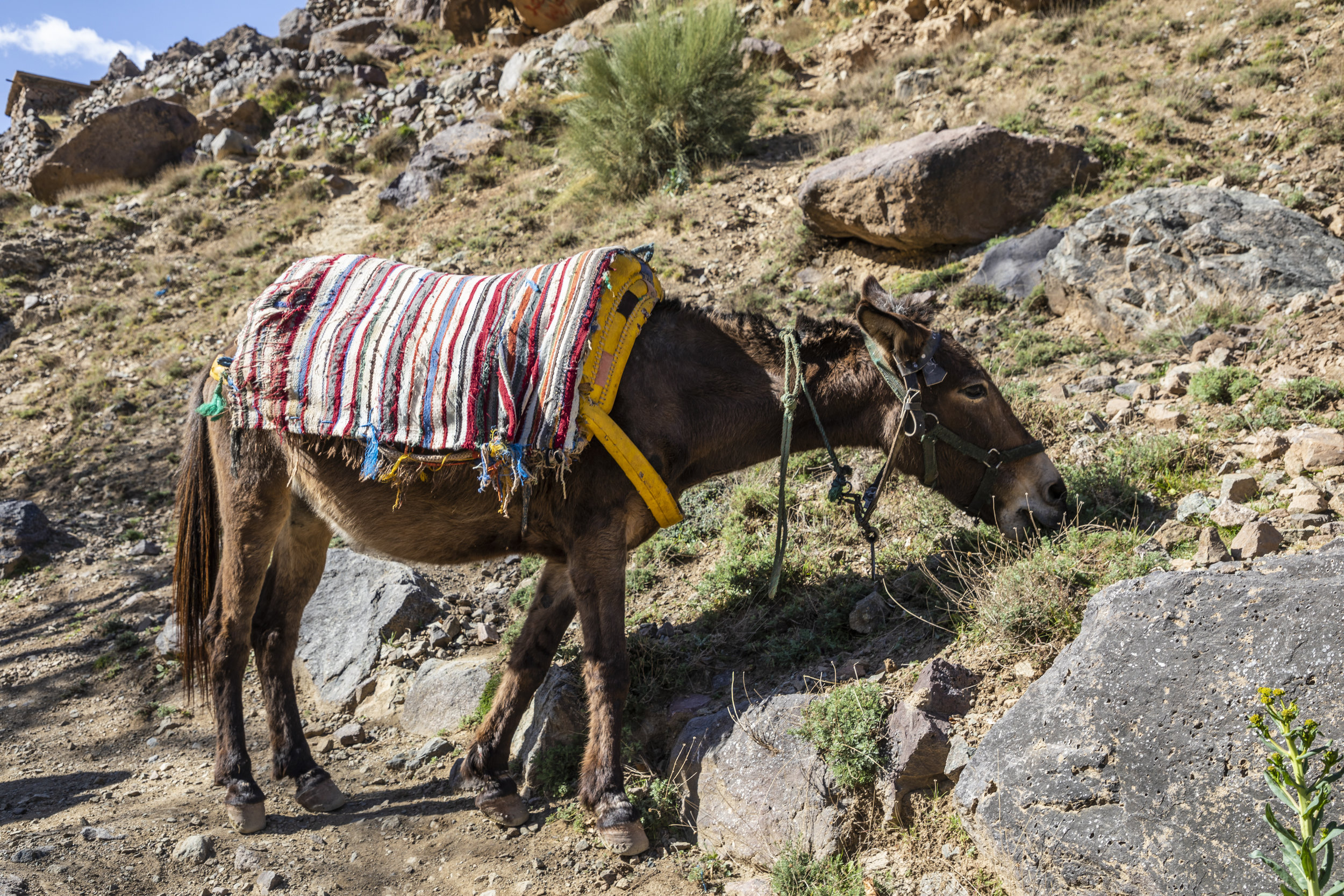






The first section of the trail takes us through the village of Imlil along paths lined by gnarly, leafless walnut trees in the Ait Mizane Valley. We were pleasantly surprised at the amount of agriculture in this valley below the mountains. Lots of fruit trees were just starting to bud. Peaches, apricots, cherries, pears, plums, almonds and walnuts are among the produce grown here.
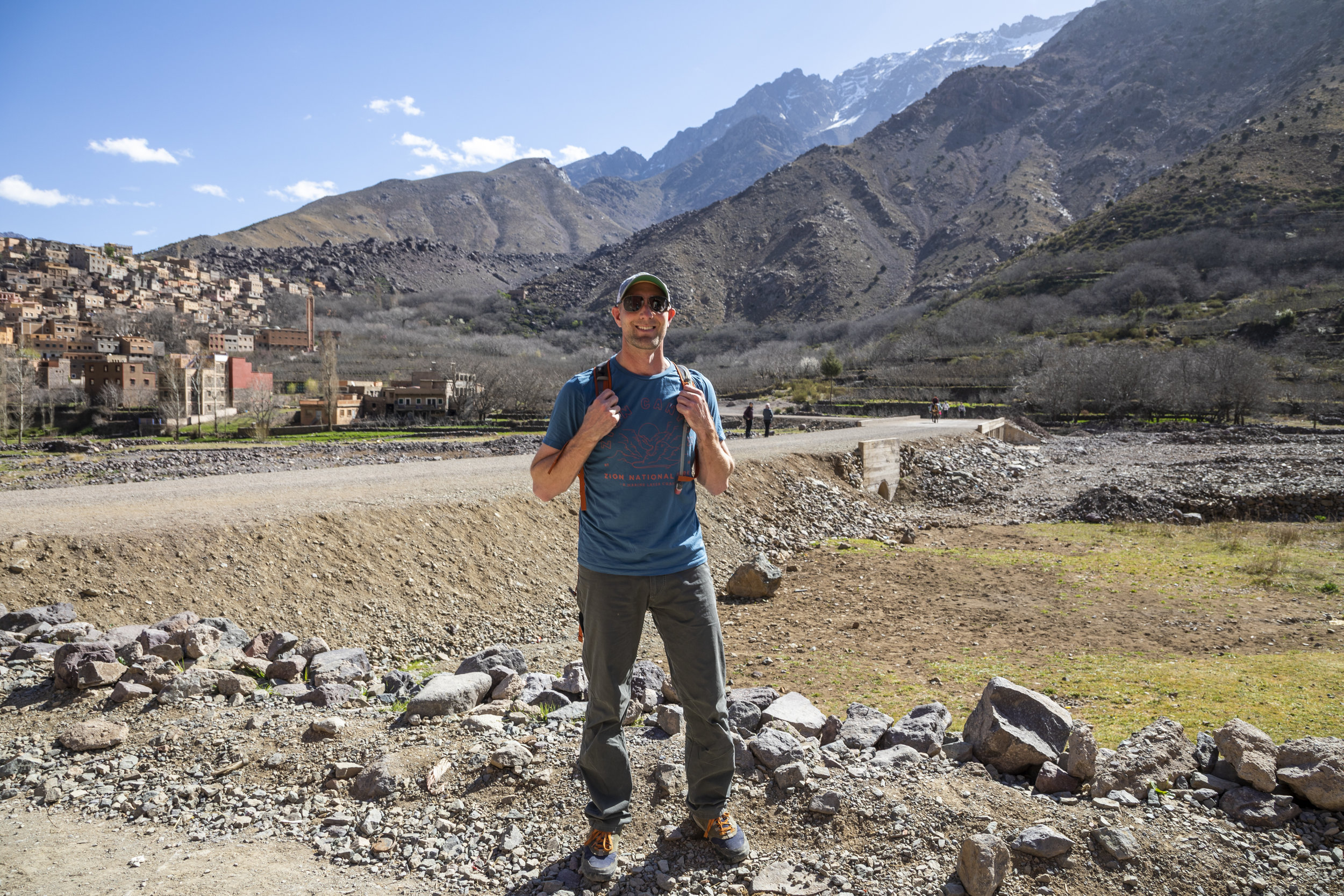

A couple miles from Imlil, we reached the official beginning of the trail and our first checkpoint. Behind us, the village of Armoud, built on the slopes of the mountain, is one of the largest Berber villages in the area and is also home to our guide, Mohammed. Each plot of land along the banks of the river belongs to a different family and is separated by a ring of rocks. The day started out sunny and warm. We were equipped and ready to face the cold and snow of the mountain peaks, but for now, the sun felt wonderful.









We learned that “toubkal” means “tall earth” in the indigenous Berber language. After about two hours of pretty steady uphill walking on a rocky path, we reached the waterfall and our second checkpoint.


Along with a guide, our trekking team included a cook and his mule. They had left Imlil before us and were preparing our lunch when we arrived at this checkpoint. What a wonderful surprise when a giant plate of delicious Moroccan salad made with fresh ingredients and a teapot of piping hot mint tea was presented. We had not expected anything so elaborate and fresh. From our experience, lunch on a hike is usually a dry sandwich with very thick bread, some crackers, cookies, and maybe some fruit. While waiting for our lunch, we noticed the hand-pressed orange juice stand and had to order a couple glasses for ourselves. It was cold, sweet and refreshing.

This area is a common day trip destination for tourists who want to visit the Sidi Chamharouch, the giant boulder that is painted white. Mohammed explained that the boulder was a shrine to a Sultan of the Jinns. Even as recent as the 1980s, locals would come to this shrine to pray for miracles and invite shaman to heal their illnesses or to help them take revenge upon an enemy by casting a spell or sickness upon them. As was customary, animal sacrifice was a normal part of these religious ceremonies. Behind the white boulder, there is a platform that is permanently stained red with animal blood. Animal sacrifice is now prohibited by the Moroccan government as they try to bring Islam to everyone and every part of the land. But Mohammed revealed that even at present, there are still isolated indigenous nomadic tribes who still worship the ancient Jinns.


In Southern California, on our hikes we are constantly aware of stepping aside for those who are faster coming behind or to clear the path for those coming towards us. In Morocco, we had to be more conscious of stepping aside for the pack animals. Sometimes, it was just a single muleteer and his mule. Other times, it was a train of mules strung together bulging on both sides from the large baskets strapped onto their saddles, which seems to be the standard method for loading and transporting material. Because an accidental nudge from one of these animals or their pack could be pretty forceful, we needed to make sure we were stepping over to the side against the mountain not the side that looked down into the valley.



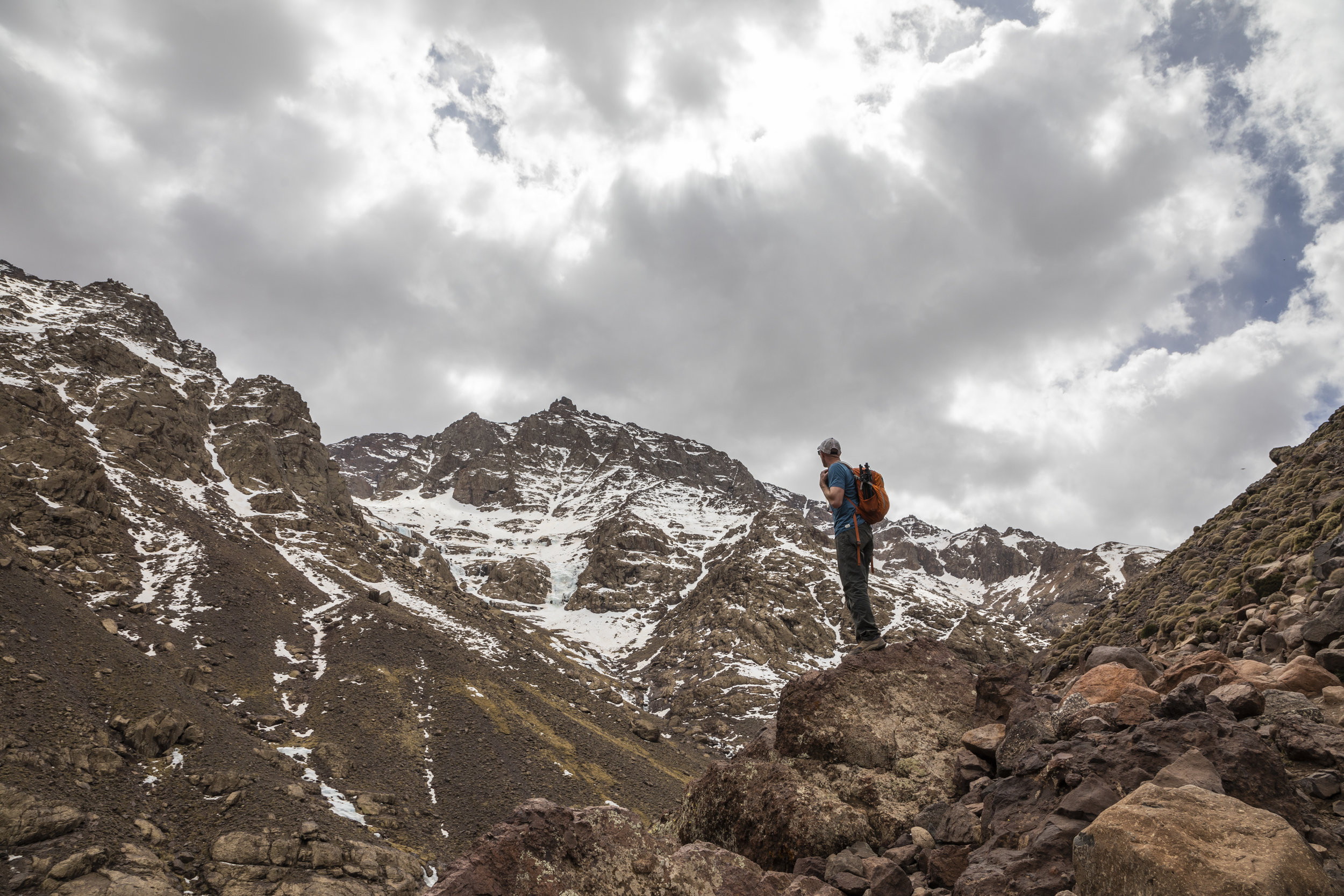



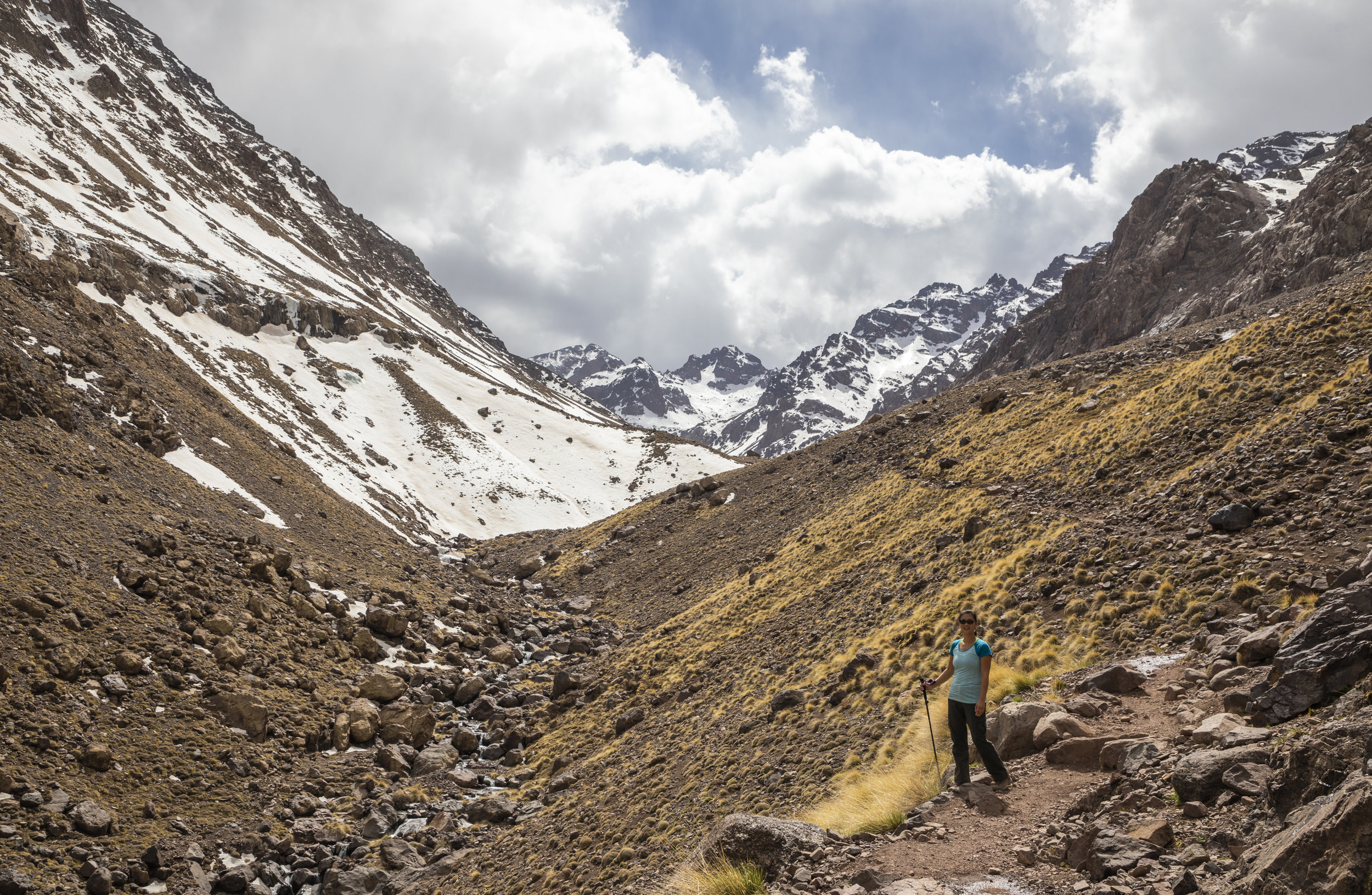

Shortly after continuing our climb after lunch break, we were within snowy patches. The air turned cold and our jackets were briskly zipped on. About half a mile away from the refuge, dainty flakes of snow gently drifted from the skies, heralding us to our destination. What a wonderful way to end a beautiful hike.



The refuge was large but stuffy and crowded with groups that had just completed the hike but staying overnight before heading down the next day and others like us who were anticipating an early summit in the morning. We had time to spare before dinner, so back out we went. We settled inside a dimple within the mounds of rocks that provided enough shelter from the wind for us to stay put for a while in the cold.

To our right, a group of six or seven people was clumsily practicing how to use ice axes to arrest their falls, colorful bodies rolling and sliding against the white mountainside. Then we noticed a group of three making their way from the refuge to an icy wall on the mountain in front of us. They proceeded to unpack their bags, geared themselves up to begin ice climbing up the frozen ice wall. Further up the mountain, a slow red dot caught our attention. A few hikers were making their way down from somewhere higher. It seemed like they just couldn’t wait any longer to be done. One of them decided to go off-trail and slid down the powdery side of the slope. They seemed very well acquainted with the terrain and all made it back to the refuge safely. As the sun disappeared behind the mountains draping the land in their shadows, the temperature dropped dramatically, and so it was time for us to seek warmth inside the refuge.



Our room in the refuge was occupied by a queen-size bunk bed. We took the top bunk and a family of 3 took the bottom bunk. If anyone moved, the whole bunk shook. Needless to say, we hardly slept a wink. Our alarm dinged at 4:30AM. We scrambled to get dressed and gathered our belongings under the low-light setting of our headlamps. By 5:30AM, with our crampons on and a few bites of a Clif Bar in our bellies, we were ready to head out.

My biggest worry was dealing with the cold. When we trekked up Kilimanjaro, we were not very prepared; our shoes were not well insulated to keep the heat in, our layering was inefficient making for an extremely cold ascent, and our trail food packed away in our bag was inaccessible. We made many mistakes stemming from our lack of experience. This time, we carefully thought about remedies to each of those issues resulting in a much more comfortable and successful ascent overall.

However, there are still a couple of problems we need to address before the next snowy summit attempt. The first had to do with my gloves and mittens. I thought that having two layers and using a hand warmer would be sufficient. I neglected the fact that both my gloves and mittens have a slot to release the thumb and that allowed the biting cold to attack my thumbs. Towards the top, I had to keep switching the hand that carried the pole whenever one thumb was too cold and numb. The other problem was, once again, our water hose connecting to the water bladder froze about half a mile from the summit. We had thought about getting an insulator, but somehow we never got around to it.
Even on the climb, Mohammed, a devout Muslim, stepped aside to practice his morning prayers at sunrise. Throughout our five days with Mohammed as our guide, he would silently find a quiet spot to pray at prayer time while we roamed around the area. We respected his religious rituals, and it was never an inconvenience to us.


Through the dark, we set one foot in front of the other against the crunchy white ground, not realizing how steep the ascent was. Yes, you read correctly. Crunchy is the very exact word to describe the icy snow.




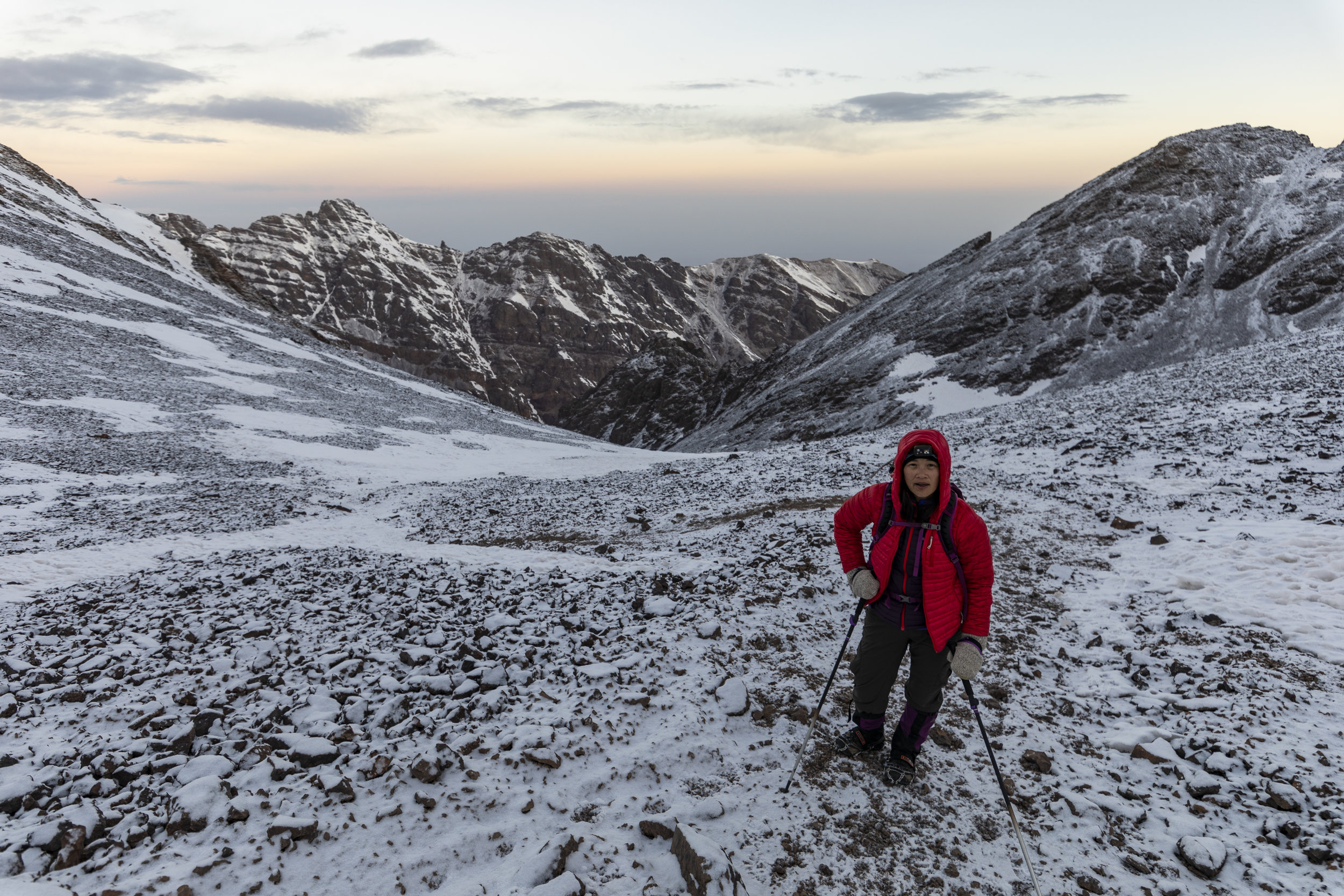




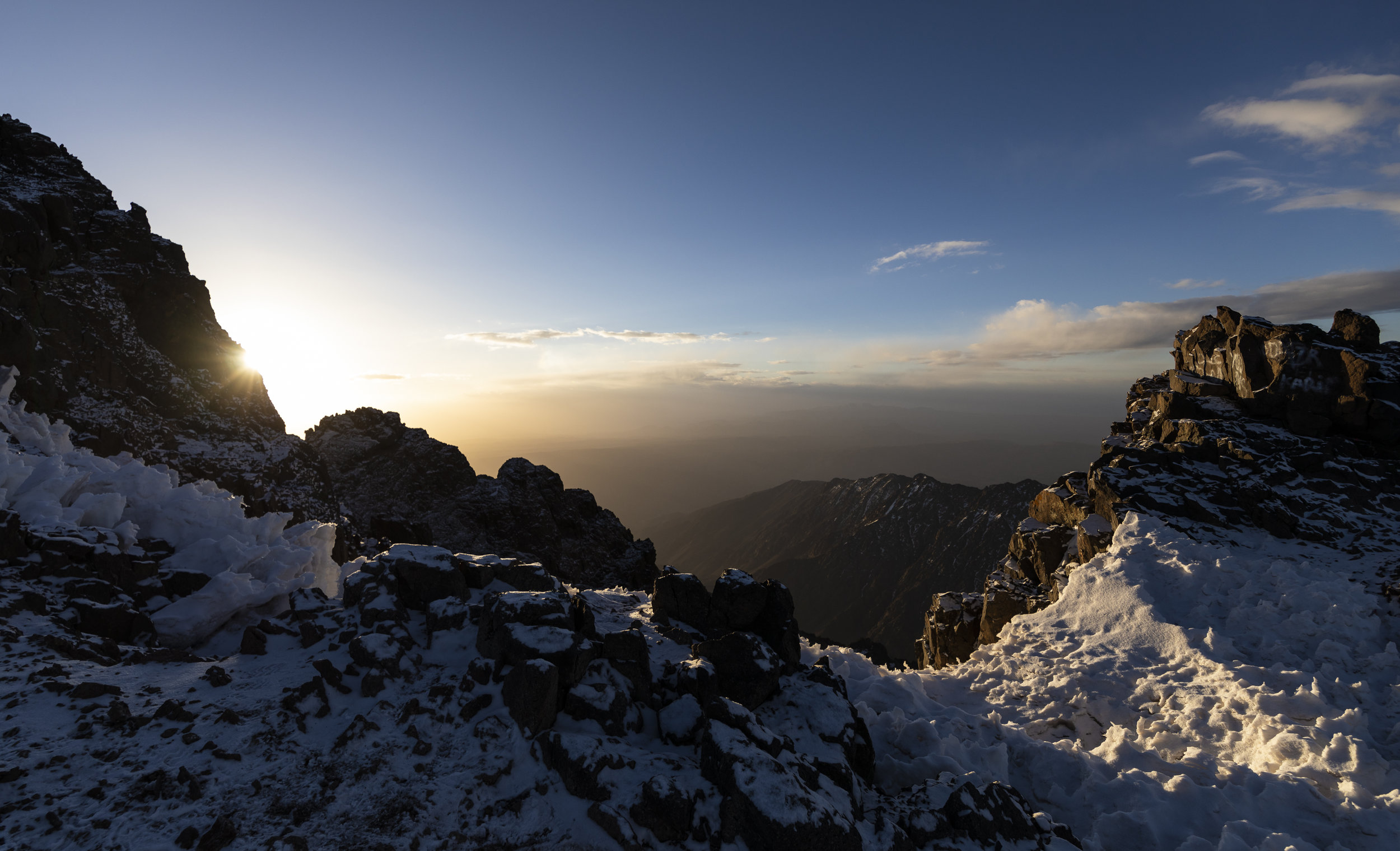
Once we passed the snowfield, the crampons had to be removed in order to better navigate the rocky terrain near the top of the mountain. As we approached the pass, the first rays of sunlight warmed our faces. We wanted to stand there and soak in the warmth, but Mohammed pushed us on, reminding us the summit was not yet achieved. At this point, Lyle was starting to feel a little lightheaded, the effects of altitude starting to take hold. Knowing that, we took the rest of the ascent slowly, stopping every now and then to catch our breath.



The summit of Mount Toubkal is marked by a metal pyramid. Luckily as we approached the top, a small group was about to leave, gifting us with the summit all to ourselves for a little while. We braved the cold for about half an hour before we succumbed and began our descent. In daylight, we were able to see more clearly the places that were tricky, like a sharp turn on a narrow ledge or a swath of ice covered by a light layer of snow where if you walked carelessly would likely result in a nasty slip, slide and fall.


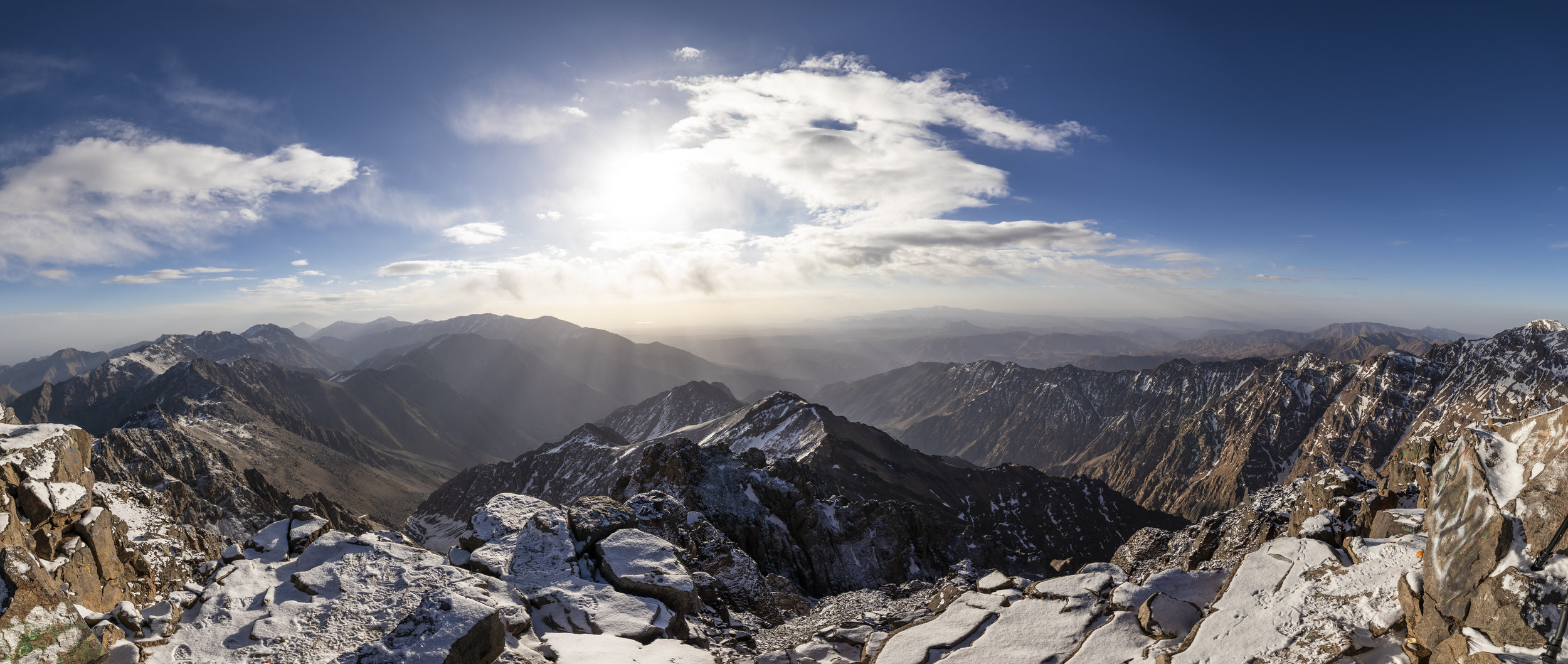






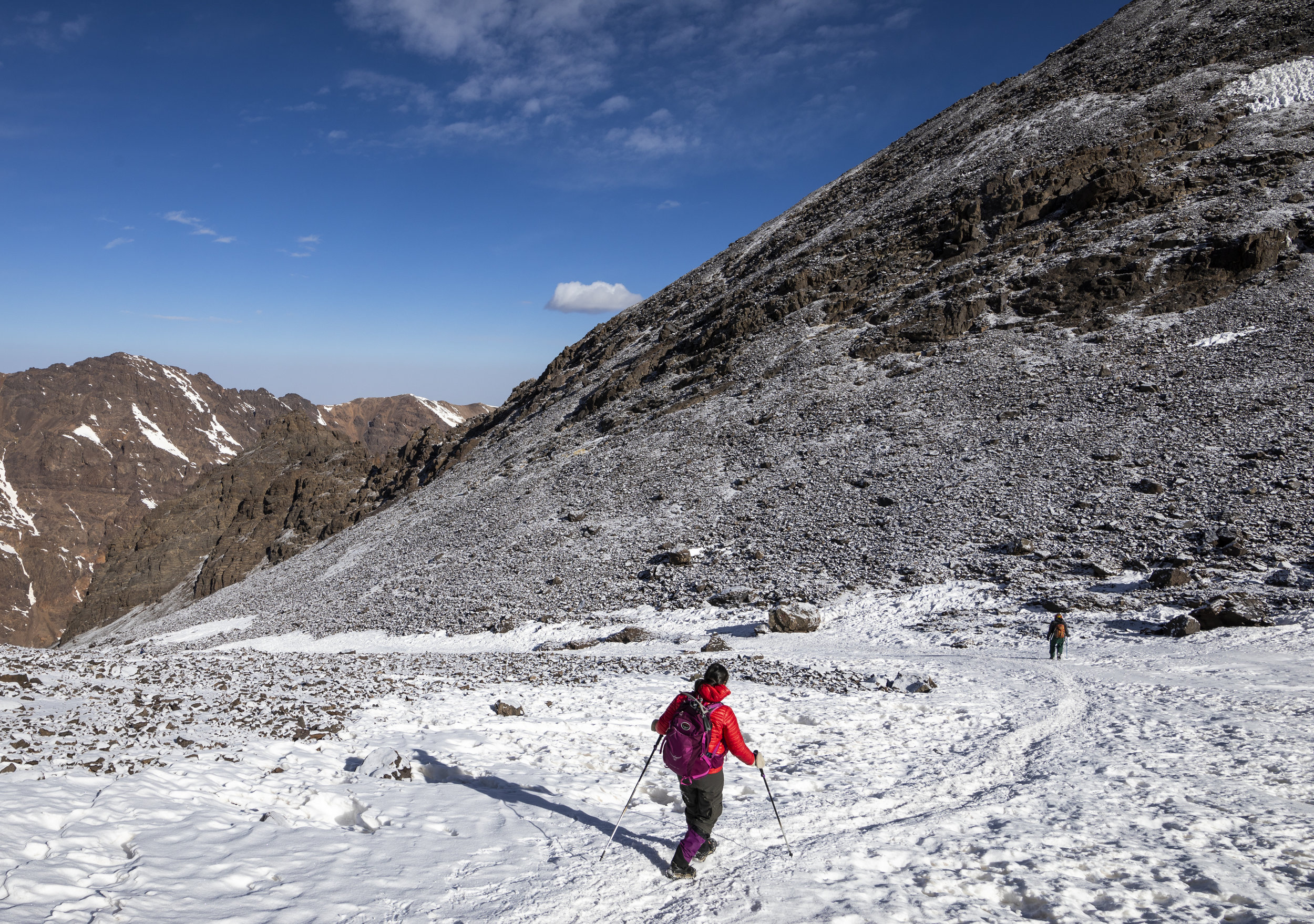


On the way down, we stopped a couple of times for Lyle to record some timelapses. It is illegal to bring a drone into Morocco, so no drone flights this whole trip. We stopped at the refuge for lunch and to gather our things before a leisurely trek back down to Imlil.





Close to the base of the mountain, we stopped at another fresh orange juice stand. Along this trail little shops acting as rest stops sold snacks and drinks including soda, beer and of course cold, fresh-squeezed orange juice. To keep the drinks cold, long black hoses are used to conduct water from the snowmelt or stream below up the mountain to the shops. Then tiny holes are poked in the hose to create a sprinkler system that continuously sprays the drinks and oranges, keeping them cold. It’s a natural refrigeration system. This is one of the most memorable and unique experiences we had in Morocco. This makes so much sense. Instead of souvenir shops, why not provide something healthy and useful. Who wouldn’t want a fresh glass of orange juice after a long hard climb! Moroccans have it right on this one!



